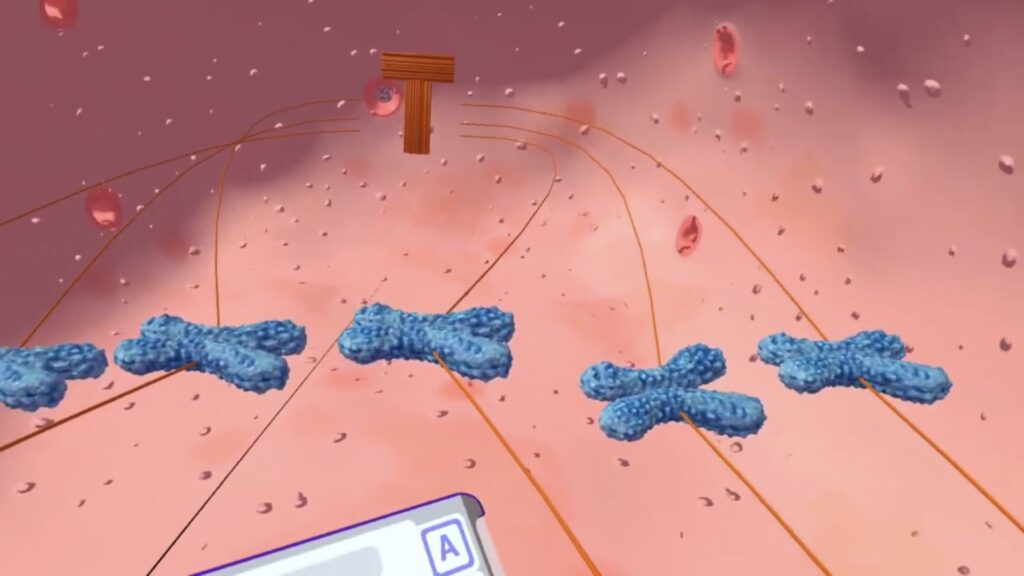

In today’s rapidly evolving world, the integration of Virtual Reality (VR) into STEM education is transforming how students engage with complex subjects. From flying through space to diving deep inside the human body, VR allows students to explore environments and concepts that were previously limited to textbooks or high-level labs. This immersive technology offers a new way of learning, bringing abstract ideas to life.
Virtual Reality in education provides students with hands-on experiences that traditional learning methods simply can’t match. With VR, STEM labs become more than just classrooms. Imagine students navigating the bloodstream, working with lasers, or observing the behavior of elementary particles. These experiences make science, technology, engineering, and math not only more engaging but also accessible to all students, no matter their physical location.
A VR classroom fosters an interactive learning environment, helping students visualize complex ideas like elementary particles or how the body functions at the cellular level. By integrating VR into the STEM lab, students can take virtual field trips to space, dive into the human body, or even experiment with dangerous elements—all from the safety of their desks.
One major advantage of VR in education is how it increases student engagement through Game-Based Learning. With VR learning platforms, lessons become interactive, motivating students to dive into simulations and solve real-world problems. By earning points, badges, and rewards for tackling complex STEM lab challenges, students stay focused and entertained.

This gamified learning environment fosters both competition and collaboration, turning the classroom into a dynamic, immersive experience. Game mechanics in virtual reality classrooms keep students actively engaged, enhancing both their problem-solving skills and retention.
The Gen Alpha thrives in a digital classroom. Growing up in a tech-savvy world, these students need learning environments that reflect their reality. VR in schools blends real and virtual worlds, aligning perfectly with their expectations.

Virtual reality in education grabs students’ attention better than traditional methods. It caters to their love for technology, making learning immersive and interactive. Students actively explore concepts, such as flying through space or examining the human body from within. As VR classrooms evolve, they will become a natural fit for the modern student’s mindset, improving focus and retention.
Virtual reality acts as a portal to the world of knowledge, unlocking doors that traditional classrooms can’t reach. Imagine slipping on a VR headset and instantly stepping into other worlds, traveling beyond the confines of a textbook into realms where learning knows no boundaries.
In VR, students can:
The classroom becomes a gateway to limitless possibilities, where students can take interactive journeys through subjects that might otherwise seem difficult. Virtual reality makes even the most complex ideas vivid and approachable, whether it’s unraveling the mysteries of DNA or stepping back in time to witness historical events unfold firsthand.
And it’s not just science—VR in education breathes life into literature, the arts, and history. It gives students the ability to walk through ancient civilizations, bringing the past to life in a way that no textbook can. With VR, every lesson becomes a new adventure, and every student an explorer.
Curious about how VR can transform your STEM curriculum? Explore the full potential of VR education by requesting a free demo from XReady Lab today. See how virtual reality in the classroom can boost student engagement, foster creativity, and enhance learning outcomes. With VR in education, the future of STEM is more immersive, interactive, and exciting than ever before.
Experience the benefits of VR learning with our free demo
Frequently Asked
We prodive VR biology, VR physics, and VR chemistry simulations. Please, check our catalog.
Please, fill the form to get demo labs for free.
Please contact our customer support service at support@xreadylab.com or book a call with the team to find out the conditions and book the VR class set up at your school.
Subscription to XReady Lab interactive VR labs. If you are a school, then you are also given access to the VR classroom system. VR class system helps you easily launch VR lessons for a large number of students, follow the experience of each student, as well as customise the content without developers.
We adhere to the world’s generally accepted recommendations and research. Our products are suitable for children from 12 years old.